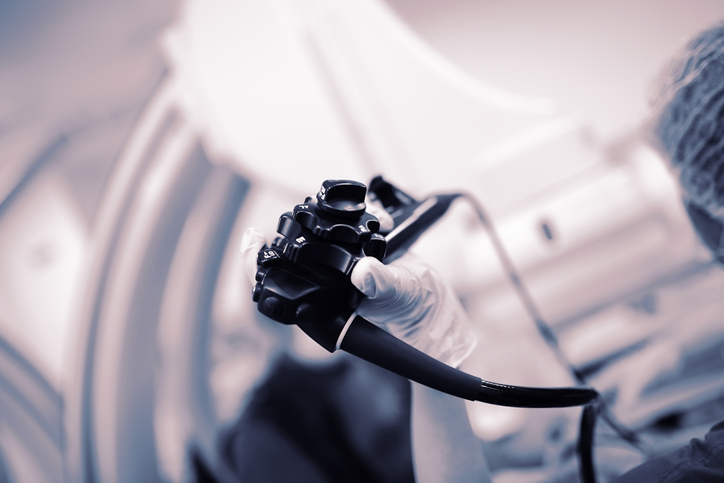
Updated endoscope reprocessing guidelines from several gastroenterology societies provide new insights into effective infection prevention in the endoscopy unit.
The gastroenterological multisociety task force, headed by the American Society for Gastrointestinal Endoscopy, published the updated guidelines in early 2021.
Reprocessing flexible endoscopes is a long, complex process that requires between 50 and 100 steps and close to two hours to complete. The overall reprocessing protocol remains unchanged under the new guidelines, but there are several updates in the 2021 document that address recent research around reprocessing techniques and the proper way to handle scopes post-reprocessing.
The COVID-19 pandemic is only mentioned in that strict adherence to reprocessing protocols – including the proper use of personal protective equipment (PPE) – is adequate to prevent the spread of the virus to other patients or healthcare staff.
Ultimately, the updated guidelines state, successful reprocessing requires a “team-based multidisciplinary approach” that includes adequate competency assessments for reprocessing staff and a diverse endoscopy unit leadership team.
Other recommendations from the document are summarized below.
Spaulding Classification Change: Not Recommended
Flexible endoscopes are considered “semi-critical” devices under the Spaulding classification because they meet mucous membranes or non-intact skin and do not penetrate sterile tissue.
Despite some push to update the classification to critical – particularly with duodenoscopes and echoendoscopes that may contact sterile tissue – the guidance is that all endoscopes remain classified as semi-critical.
Semi-critical devices require a minimum of high-level disinfection prior to reuse.
Double High-Level Disinfection: Not Recommended
Recent research has suggested double high-level disinfection may be one way to reduce endoscope-associated infection. A study published in July 2021 found that at high-volume ERCP facilities, double high-level disinfection and liquid chemical sterilization offered the same infection prevention benefits.
However, the new updated guidelines state that repeat HLD is not required in a non-outbreak setting. Under normal circumstances, one cycle of high-level disinfection – preferably in an automated endoscope reprocessor (AER) – is enough to ensure adequate reprocessing.
Tracking Patient Information: Recommended
In the event of an outbreak, institutions should have careful records that connect contaminated endoscopes back to the patients they were used on. The following information is recommended to be recorded during each reprocessing cycle should an infection outbreak occur:
Microbiologic Surveillance: Recommended
Previously, there has been no standard for microbiologic surveillance testing post-reprocessing in the U.S. The new guidelines recommend endoscopy units adopt such procedures to ensure adequate reprocessing and patient safety.
Detecting even common GI tract pathogens on reprocessed endoscopes can indicate that dangerous microbes may be present on the scopes.
Regular Performance Evaluations: Recommended
Endoscopy units should comply with manufacturer instructions for use for regular scope maintenance and repair. A maintenance log should be used to track when scopes are in and out of service for the unit, according to the mulitsociety group recommendations.
Normal wear and tear on flexible endoscopes can lead to inadequate reprocessing. Studies show that cracks or scratches on endoscope channels harbor dangerous bacteria or biofilm and potentially cause patient infection.
The U.S. Food and Drug Administration began stepping up studies of endoscope-associated infections five years ago after some high-profile infections resulting from contaminated duodenoscopes. Duodenoscopes have an elevator mechanism that is particularly difficult to clean and disinfect.
The FDA has recommended device manufacturers develop duodenoscopes with disposable components or fully disposable scopes as one way to address infection risk to patients. Single-use duodenoscopes are made for one time use and no reprocessing and repairs are needed.
The agency has awarded 510(k) clearance for single-use models from Ambu A/S and Boston Scientific Corp. and more companies are expected to follow suit and submit other devices for clearance.
The updated mulitsociety guidelines recognize the potential infection prevention benefits of single-use duodenoscopes. They also suggest further research is needed to analyze the economic and performance impacts of the technology in the endoscopy unit.
The multisociety task force is made up of the American Society of Gastrointestinal Endoscopy (ASGE), American Association for the Study of Liver Disease (AASLD), American Gastroenterological Association (AGA), Association of periOperative Registered Nurses (AORN), Association for Professionals in Infection Control and Epidemiology (APIC), Ambulatory Surgery Center Association (ASCA), American Society of Colon and Rectal Surgeons (ASCRS), Society of Gastroenterology Nurses and Associates (SGNA), and the Society for Healthcare Epidemiology of America (SHEA).


